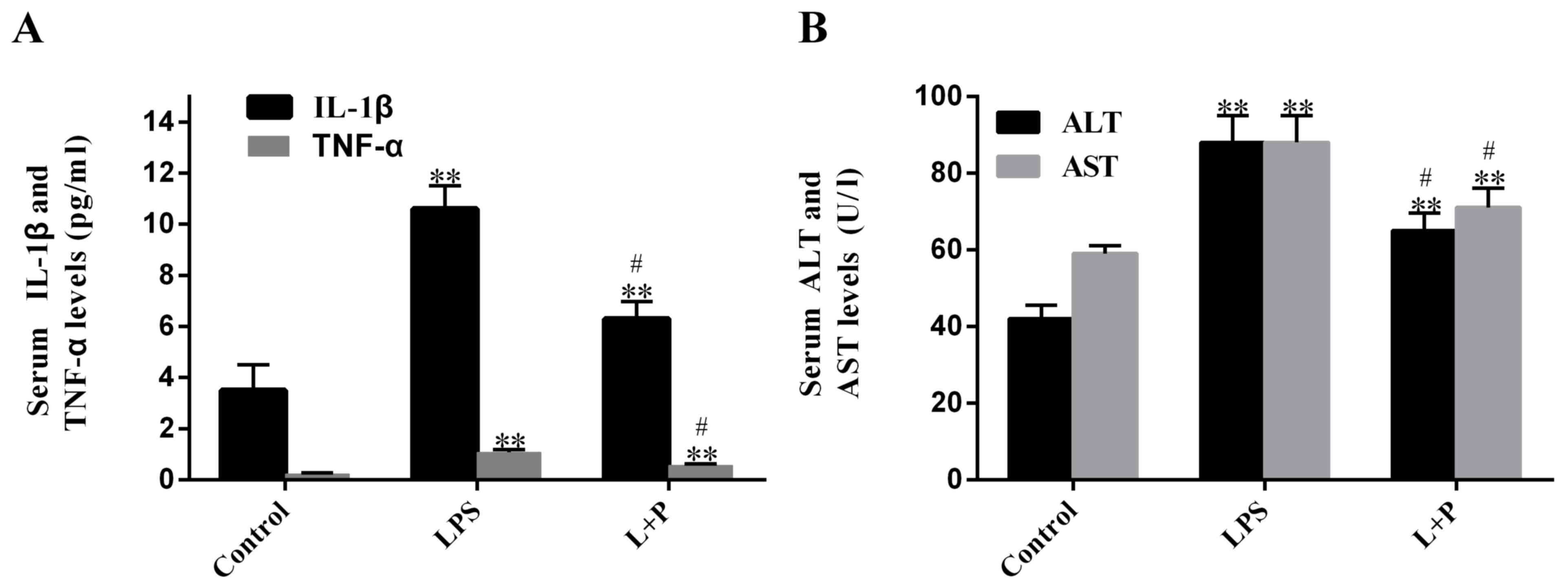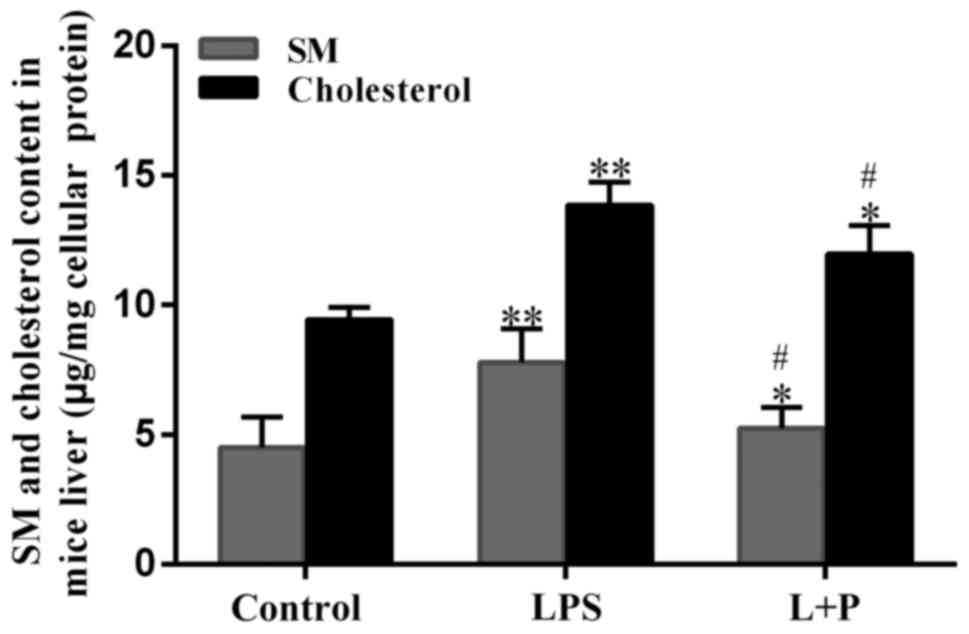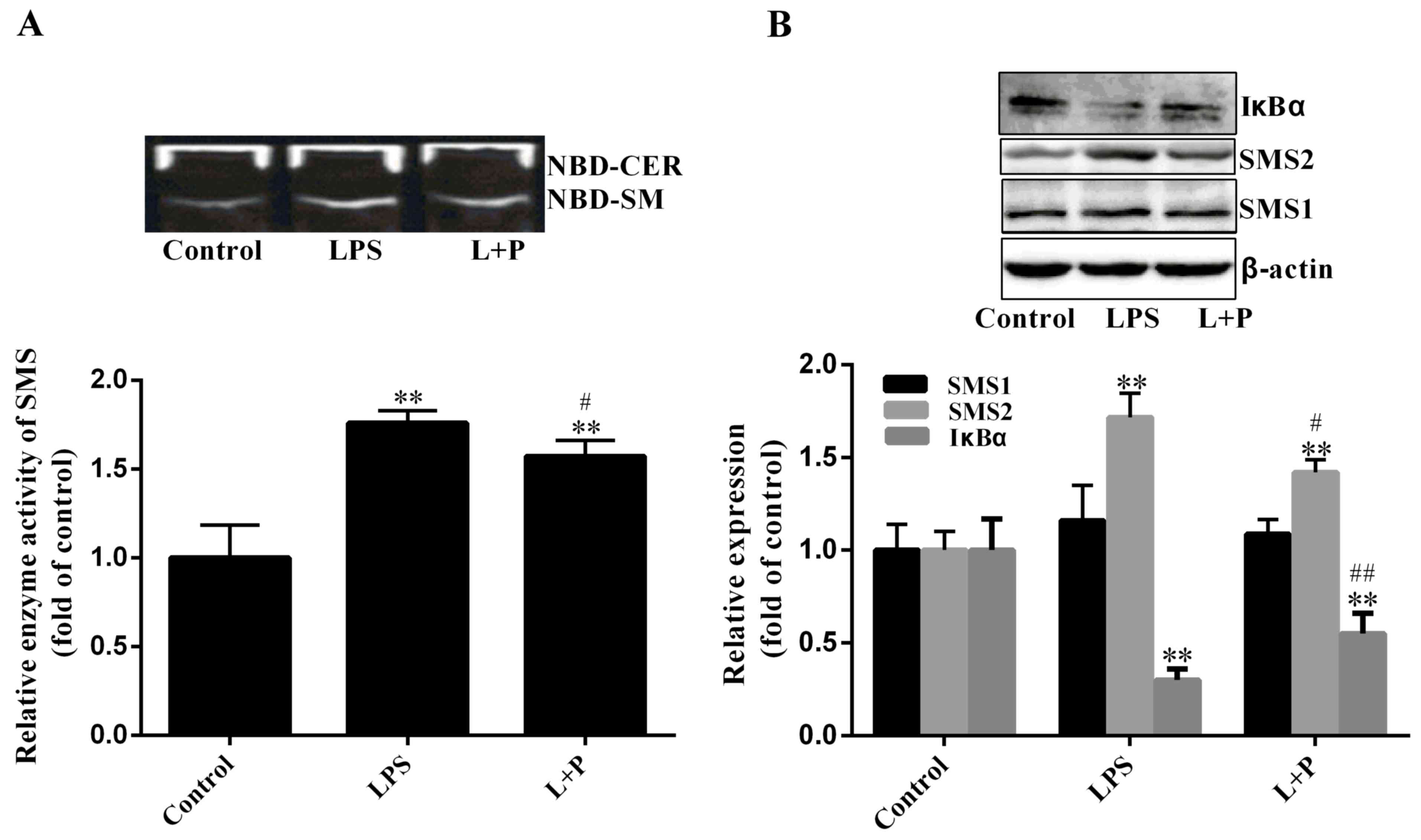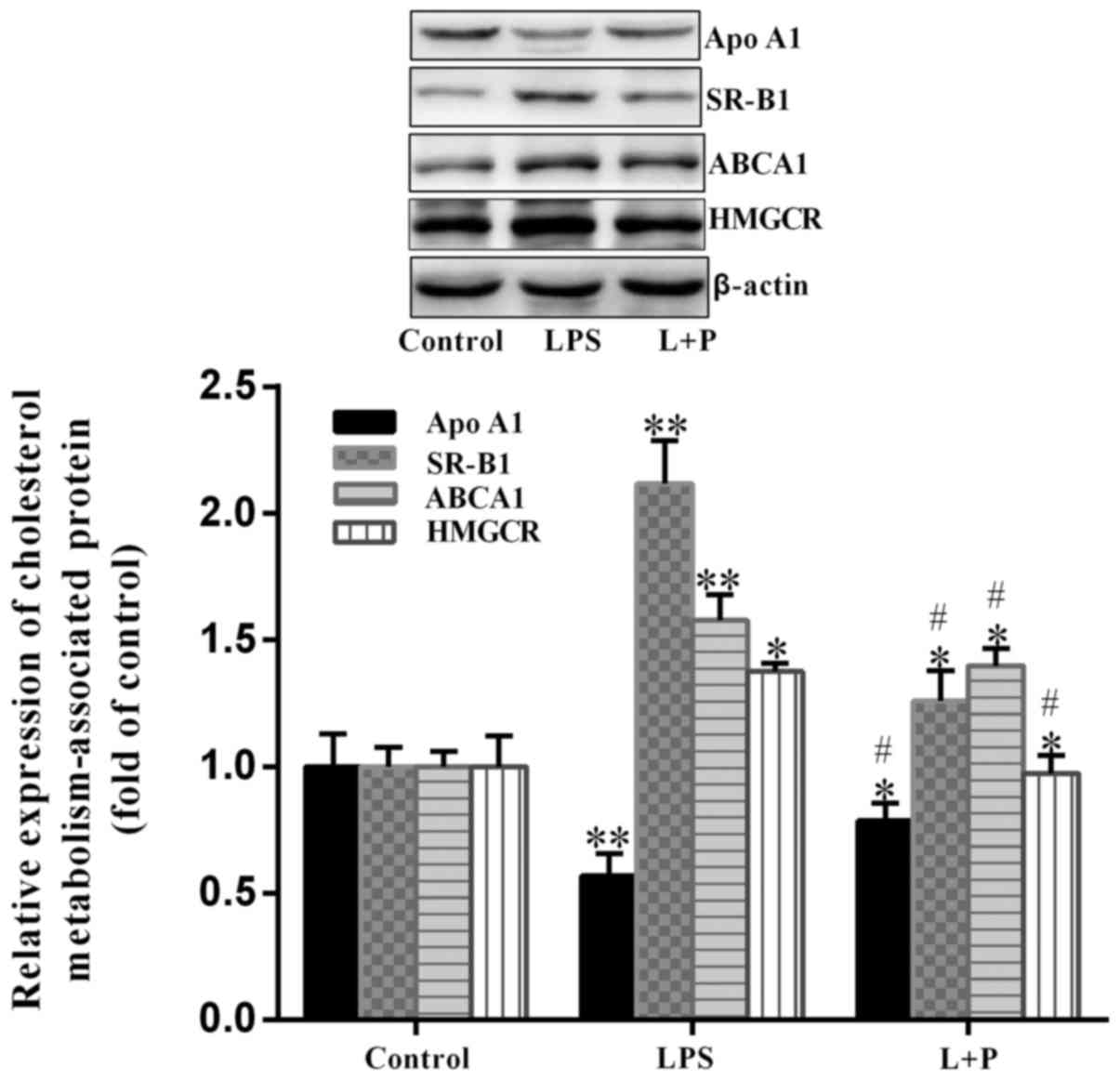|
1
|
Zotova NV, Chereshnev VA and Gusev EY:
Systemic inflammation: Methodological approaches to identification
of the common pathological process. PLoS One. 11:e01551382016.
View Article : Google Scholar : PubMed/NCBI
|
|
2
|
Dombrovskiy VY, Martin AA, Sunderram J and
Paz HL: Rapid increase in hospitalization and mortality rates for
severe sepsis in the United States: A trend analysis from 1993 to
2003. Crit Care Med. 35:1244–1250. 2007. View Article : Google Scholar : PubMed/NCBI
|
|
3
|
Tadros T, Traber DL, Heggers JP and
Herndon DN: Effects of interleukin-1alpha administration on
intestinal ischemia and reperfusion injury, mucosal permeability,
and bacterial translocation in burn and sepsis. Ann Surg.
237:101–109. 2003. View Article : Google Scholar : PubMed/NCBI
|
|
4
|
Chen XC, Yang YF, Wang R, Gou HF and Chen
XZ: Epidemiology and microbiology of sepsis in mainland China in
the first decade of the 21st century. Int J Infect Dis. 31:9–14.
2015. View Article : Google Scholar : PubMed/NCBI
|
|
5
|
Peng X, Hassoun PM, Sammani S, McVerry BJ,
Burne MJ, Rabb H, Pearse D, Tuder RM and Garcia JG: Protective
effects of sphingosine 1-phosphate in murine endotoxin-induced
inflammatory lung injury. Am J Respir Crit Care Med. 169:1245–1251.
2004. View Article : Google Scholar : PubMed/NCBI
|
|
6
|
Bektas M, Allende ML, Lee BG, Chen W, Amar
MJ, Remaley AT, Saba JD and Proia RL: Sphingosine-1-phosphatelyase
deficiency disrupts lipid homeostasis in liver. J Biol Chem.
285:10880–10889. 2010. View Article : Google Scholar : PubMed/NCBI
|
|
7
|
Yeang C, Ding T, Chirico WJ and Jiang XC:
Subcellular targeting domains of sphingomyelin synthase 1 and 2.
Nutr Metab (Lond). 8:892011. View Article : Google Scholar : PubMed/NCBI
|
|
8
|
Hu S, Ding Y, Gong J and Yan N:
Sphingomyelin synthase 2 affects CD14-associated induction of NF-κB
by lipopolysaccharides in acute lung injury in mice. Mol Med Rep.
14:3301–3306. 2016. View Article : Google Scholar : PubMed/NCBI
|
|
9
|
Gowda S, Yeang C, Wadgaonkar S, Anjum F,
Grinkina N, Cutaia M, Jiang XC and Wadgaonkar R: Sphingomyelin
synthase 2 (SMS2) deficiency attenuates LPS-induced lung injury. Am
J Physiol Lung Cell Mol Physiol. 300:L430–L440. 2011. View Article : Google Scholar : PubMed/NCBI
|
|
10
|
Anjum F, Joshi K, Grinkina N, Gowda S,
Cutaia M and Wadgaonkar R: Role of sphingomyelin synthesis in
pulmonary endothelial cell cytoskeletal activation and
endotoxin-induced lunginjury. Am J Respir Cell Mol Biol. 47:94–103.
2012. View Article : Google Scholar : PubMed/NCBI
|
|
11
|
Memon RA, Grunfeld C, Moser AH and
Feingold KR: Tumor necrosis factor mediates the effects of
endotoxin on cholesterol and triglyceride metabolism in mice.
Endocrinology. 132:2246–53. 1993. View Article : Google Scholar : PubMed/NCBI
|
|
12
|
Ozguler IM, Burma O, Uysal A and Akbulut
H: Rosuvastatin lowers systemic inflammatory response in coronary
artery bypass graft accompanied by cardiopulmonary bypass surgery:
A randomized controlled study. Clin Invest Med. 38:E154–E163. 2015.
View Article : Google Scholar : PubMed/NCBI
|
|
13
|
Almog Y, Shefer A, Novack V, Maimon N,
Barski L, Eizinger M, Friger M, Zeller L and Danon A: Prior statin
therapy is associated with a decreased rate of severe sepsis.
Circulation. 110:880–885. 2004. View Article : Google Scholar : PubMed/NCBI
|
|
14
|
Schurr JW, Wu W, Smith-Hannah A, Smith CJ
and Barrera R: Incidence of sepsis and mortality with prior
exposure of HMG-COA reductase inhibitors in a surgical intensive
care population. Shock. 45:10–15. 2016. View Article : Google Scholar : PubMed/NCBI
|
|
15
|
Chung S, Cuffe H, Marshall SM, McDaniel
AL, Ha JH, Kavanagh K, Hong C, Tontonoz P, Temel RE and Parks JS:
Dietary cholesterol promotes adipocyte hypertrophy and adipose
tissue inflammation in visceral, but not in subcutaneous, fat in
monkeys. Arterioscler Thromb Vasc Biol. 34:1880–1887. 2014.
View Article : Google Scholar : PubMed/NCBI
|
|
16
|
Lewis GF and Rader DJ: New insights into
the regulation of HDL metabolism and reverse cholesterol transport.
Circ Res. 96:1221–1232. 2005. View Article : Google Scholar : PubMed/NCBI
|
|
17
|
Guo K, Ren J, Wang G, Gu G, Li G, Wu X,
Chen J, Ren H, Hong Z, Wu L, et al: Early liver dysfunction in
patients with intra-abdominal infections. Medicine (Baltimore).
94:e17822015. View Article : Google Scholar : PubMed/NCBI
|
|
18
|
Ding R, Han J, Zhao D, Hu Z and Ma X:
Pretreatment with Rho-kinase inhibitor ameliorates lethal
endotoxemia-induced liver injury by improving mitochondrial
function. Int Immunopharmacol. 40:125–130. 2016. View Article : Google Scholar : PubMed/NCBI
|
|
19
|
Kabay S, Ozden H, Guven G, Burukoglu D,
Ustuner MC, Topal F, Gunes HV, Ustuner D and Ozbayer C: Protective
effects of the nuclear factor kappa B inhibitor pyrrolidine
dithiocarbamate on experimental testicular torsion and detorsion
injury. Korean J Physiol Pharmaco l. 18:321–326. 2014. View Article : Google Scholar
|
|
20
|
Cuzzocrea S, Chatterjee PK, Mazzon E, Dugo
L, Serraino I, Britti D, Mazzullo G, Caputi AP and Thiemermann C:
Pyrrolidine dithiocarbamate attenuates the development of acute and
chronic inflammation. Br J Pharmacol. 135:496–510. 2002. View Article : Google Scholar : PubMed/NCBI
|
|
21
|
National Research Council (US) Committee
for the Update of the Guide for the Care and Use of Laboratory
Animals: Guide for the Care and Use of Laboratory Animals. National
Academies Press (US); Washington, DC: 2011
|
|
22
|
Dong J, Liu J, Lou B, Li Z, Ye X, Wu M and
Jiang XC: Adenovirus-mediated overexpression of sphingomyelin
synthase1 and 2 increases the atherogenic potential in mice. J
Lipid Res. 47:1307–1014. 2006. View Article : Google Scholar : PubMed/NCBI
|
|
23
|
Liu AQ, Xie Z, Chen XN, Feng J, Chen JW,
Qin FJ and Ge LY: Fas-associated factor 1 inhibits tumor growth by
suppressing Helicobacter pylori-induced activation of NF-κB
signaling in human gastric carcinoma. Oncotarget. 8:7999–8009.
2017.PubMed/NCBI
|
|
24
|
Lewis GF and Rader DJ: New insights into
the regulation of HDL metabolism and reverse cholesterol transport.
Circ Res. 96:1221–1232. 2005. View Article : Google Scholar : PubMed/NCBI
|
|
25
|
Hailemariam TK, Huan C, Liu J, Li Z, Roman
C, Kalbfeisch M, Bui HH, Peake DA, Kuo MS, Cao G, et al:
Sphingomyelin synthase 2 deficiency attenuates NFkappaB activation.
Arterioscler Thromb Vasc Biol. 28:1519–1526. 2008. View Article : Google Scholar : PubMed/NCBI
|
|
26
|
Liu J, Zhang H, Li Z, Hailemariam TK,
Chakraborty M, Jiang K, Qiu D, Bui HH, Peake DA, Kuo MS, et al:
Sphingomyelin synthase 2 Is one of the determinants for plasma and
liver sphingomyelin levels in mice. Arterioscler Thromb Vasc Biol.
29:850–856. 2009. View Article : Google Scholar : PubMed/NCBI
|
|
27
|
Ho PC, Chang KC, Chuang YS and Wei LN:
Cholesterol regulation of receptor interacting protein 140 via
microRNA-33 in inflammatory cytokine production. FASEB J.
25:1758–1766. 2011. View Article : Google Scholar : PubMed/NCBI
|
|
28
|
Segrest JP, Jones MK, De Loof H,
Brouillette CG, Venkatachalapathi YV and Anantharamaiah GM: The
amphipathic helix in the exchangeable apolipoproteins: A review of
secondary structure and function. J Lipid Res. 33:141–166.
1992.PubMed/NCBI
|
|
29
|
Kaplan R, Gan X, Menke JG, Wright SD and
Cai TQ: Bacterial lipopolysaccharide induces expression of ABCA1
but not ABCG1 via an LXR-independent pathway. J Lipid Res.
43:952–959. 2002.PubMed/NCBI
|
|
30
|
Simons K and Ikonen E: Functional rafts in
cell membranes. Nature. 387:569–572. 1997. View Article : Google Scholar : PubMed/NCBI
|
|
31
|
Ding TB, Li ZQ, Hailemariam T, Mukherjee
S, Maxfield FR, Wu MP and Jiang XC: SMS overe-xpression and
knockdown: Impact on cellular sphingomyelin and diacylglycerol
metabolism and cell apoptosis. J Lipid Res. 49:376–385. 2008.
View Article : Google Scholar : PubMed/NCBI
|
|
32
|
Yan N, Ding T, Dong J, Li Y and Wu M:
Sphingomyelin synthase overexpression increases cholesterol
accumulation and decreases cholesterol secretion in liver cells.
Lipids Health Dis. 10:462011. View Article : Google Scholar : PubMed/NCBI
|
|
33
|
Lee CY, Lesimple A, Denis M, Vincent J,
Larsen A, Mamer O, Krimbou L, Genest J and Marcil M: Increased
sphingomyelin content impairs HDL biogenesis and maturation in
human Niemann-Pick disease type B. J Lipid Res. 47:622–632. 2006.
View Article : Google Scholar : PubMed/NCBI
|














